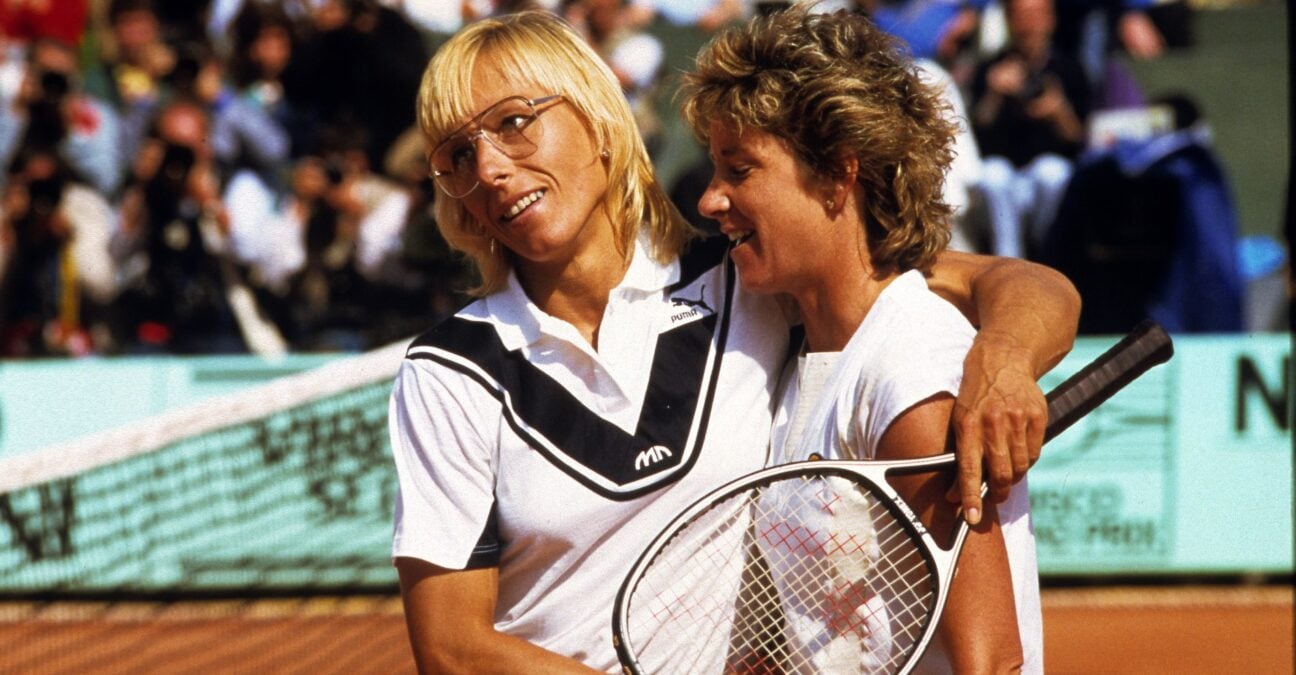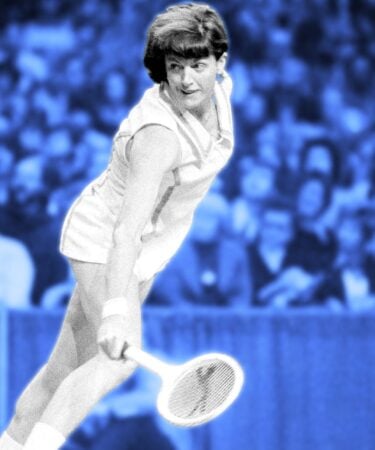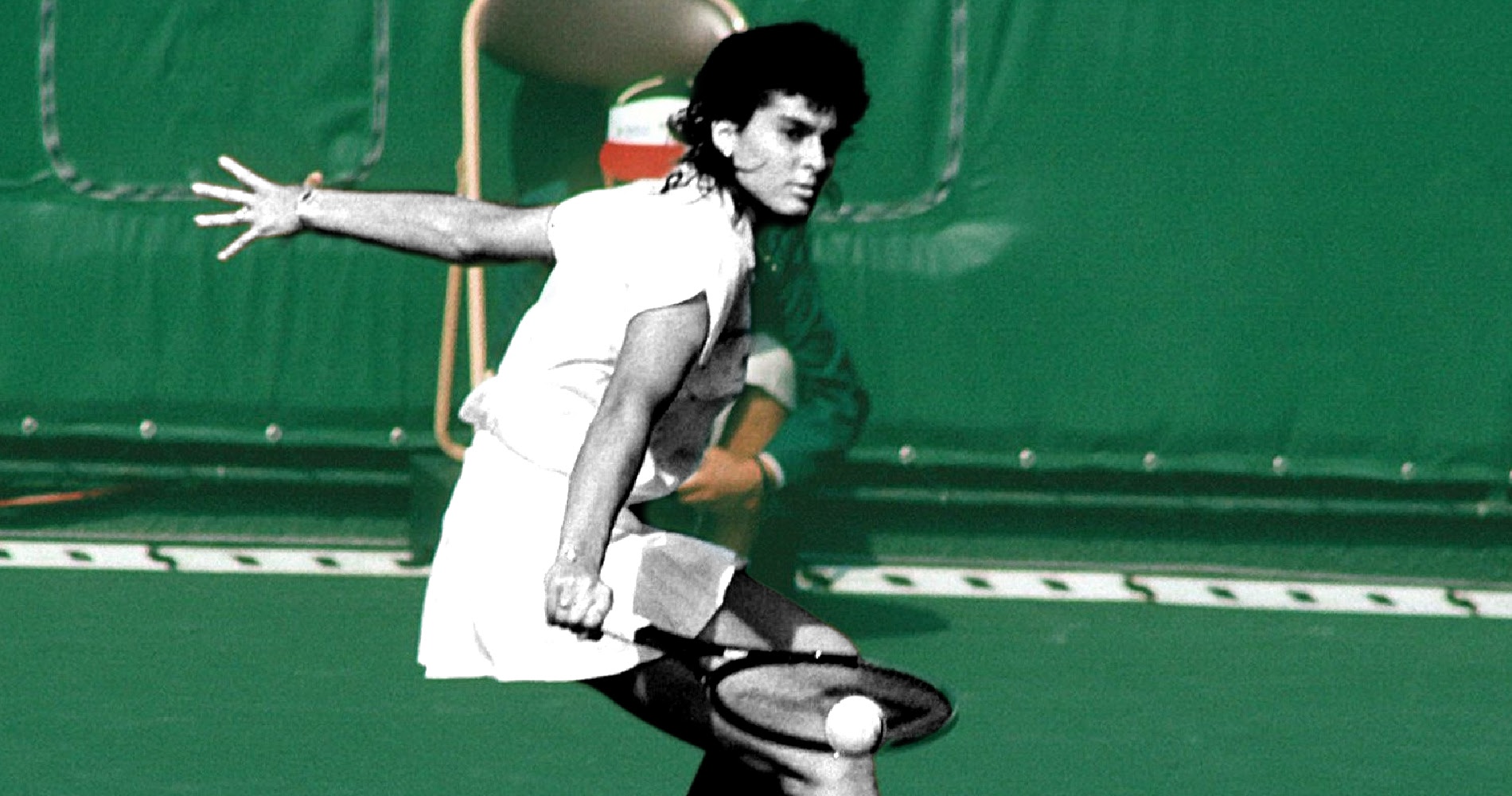Who is the GOAT of women’s tennis? Discover the top 10
An in-depth look at 10 of the very best female players of all time
 Chris Evert and Martina Navratilova embrace after the Roland-Garros final in 1985 – Tennis Magazine / Panoramic
Chris Evert and Martina Navratilova embrace after the Roland-Garros final in 1985 – Tennis Magazine / Panoramic
The debate over the greatest women’s player of all time continues to captivate fans worldwide. Our analysis ranks the 10 most accomplished female tennis players in history, based on Grand Slam victories, tournament success, weeks at No. 1, and historical impact. From Martina Navratilova’s unmatched versatility to Maria Bueno’s South American pioneering, each champion has transformed the sport through record-breaking achievements and distinctive playing styles.
Martina Navratilova: The Ultimate Tennis GOAT
Born in Czechoslovakia (now Czech Republic), Navratilova dominated women’s tennis from the late 1970s through the 1980s with an aggressive serve-and-volley style that revolutionised the women’s game. Her physical conditioning and left-handed play created match-up problems for nearly every opponent she faced.
Beyond her 18 singles majors, Navratilova’s complete tennis résumé includes:
- A record 167 singles titles and 177 doubles titles across her career
- 31 additional Grand Slam titles in women’s doubles and mixed doubles
- A record 9 Wimbledon singles championships
- 332 weeks ranked as world No. 1
- Continued excellence into her 40s, reaching a Wimbledon final at age 37
What truly separates Navratilova in the GOAT conversation is not just her singles dominance but her unparalleled all-court mastery. When factoring in all disciplines, her total of 59 Grand Slam titles (across singles, doubles, and mixed doubles) remains unsurpassed in tennis history.
| Category | Navratilova | Next Best Player |
| Total Grand Slam Titles | 59 | 39 (Margaret Court) |
| Wimbledon Singles Titles | 9 | 7 (Serena Williams) |
| Consecutive Grand Slam Finals | 11 | 10 (Steffi Graf) |
| Career Singles Titles | 167 | 131 (Chris Evert) |
| Career Doubles Titles | 177 | 78 (Billie Jean King) |
Chris Evert: The Ice Queen’s Legacy
The American tennis legend dominated the women’s game throughout the 1970s and into the 1980s with her methodical baseline play and unmatched mental fortitude.
Evert’s career was defined by remarkable consistency and precision. Her two-handed backhand became the technical template for generations of players who followed. Unlike Navratilova’s serve-and-volley approach, Evert controlled matches from the baseline with pinpoint groundstrokes and tactical intelligence.
Her career achievements include:
- A record 34 consecutive Grand Slam semi-final appearances
- 157 consecutive wins on clay courts between 1973 and 1979
- 7 French Open titles (a record)
- 260 weeks ranked as world No. 1
- An unmatched 90% career winning percentage (1,309-146)
What distinguishes Evert in the GOAT conversation is her unprecedented consistency across all surfaces and conditions. While she particularly excelled on clay, she captured multiple titles on all surfaces, demonstrating a versatility that few players in history could match.
| Category | Evert | Surface |
| French Open | 7 titles | Clay |
| US Open | 6 titles | Hard/Clay/Grass |
| Wimbledon | 3 titles | Grass |
| Australian Open | 2 titles | Grass/Hard |
The Evert-Navratilova rivalry remains perhaps the greatest in tennis history, with the pair facing each other 80 times between 1973 and 1988. This intense competition pushed both players to new heights and helped elevate women’s tennis to unprecedented popularity worldwide.
Steffi Graf: The Golden Slam Champion
The German champion dominated women’s tennis throughout the late 1980s and 1990s with her devastating forehand, often described by tennis analysts as the best in the history of women’s tennis.
Graf’s career reached its zenith in 1988 when she accomplished what no other tennis player, male or female, has achieved before or since: the Golden Slam. This remarkable achievement involved winning all four Grand Slam tournaments (Australian Open, French Open, Wimbledon, and US Open) plus an Olympic gold medal in the same calendar year. This unprecedented feat demonstrates Graf’s exceptional versatility across all playing surfaces.
Her tennis resume includes several distinctions that strengthen her GOAT candidacy:
- A total of 377 weeks ranked as world No. 1 – the longest reign of any player, male or female
- At least 4 titles at each Grand Slam event, showcasing her adaptability to all surfaces
- 22 Grand Slam singles titles won across a 17-year career
- 7 Wimbledon singles titles (from 8 finals)
- Completion of multiple Career Grand Slams (winning all four majors)
What separates Graf in the GOAT conversation is the dominance and efficiency with which she accumulated her achievements. While her total points ranking places her third in our analysis, many tennis historians argue that the quality and significance of her accomplishments—particularly the Golden Slam—establish her as the greatest of all time.
| Tournament | Titles | Finals | Win Percentage |
| Australian Open | 4 | 4 | 100% |
| French Open | 6 | 9 | 66.7% |
| Wimbledon | 7 | 8 | 87.5% |
| US Open | 5 | 6 | 83.3% |
Graf’s playing style revolutionized women’s tennis with its combination of power, athleticism, and tactical intelligence. Her inside-out forehand became her signature weapon, while her footwork and court coverage set new standards for the women’s game.
Billie Jean King: The Pioneer and Advocate
While her achievements place her among tennis elites, King’s legacy transcends statistical achievements through her revolutionary impact on women’s tennis and sports equality.
King’s tennis career peaked in the late 1960s and early 1970s, during which she displayed exceptional versatility across all court surfaces. Her aggressive net play and tactical intelligence made her particularly dominant at Wimbledon, where she captured six singles titles. Her adaptability allowed her to excel during tennis’s transition from amateur to professional competition.
Her on-court resume includes several notable achievements:
- 12 Grand Slam singles titles between 1966 and 1975
- 39 total Grand Slam titles across singles, doubles, and mixed doubles
- 6 Wimbledon singles championships
- 4 US Open titles
- A career “Triple Crown” at Wimbledon (1973), winning singles, doubles, and mixed doubles in the same year
What distinguishes King in tennis history is her pioneering role in establishing professional opportunities for women in the sport. In 1973, she founded the Women’s Tennis Association (WTA) and became its first president, creating the organizational structure that governs women’s professional tennis to this day. That same year, her victory in the highly publicized “Battle of the Sexes” match against Bobby Riggs brought unprecedented attention to women’s tennis.
| Contribution | Impact on Women’s Tennis |
| Founding the WTA | Created professional governance structure |
| Equal Prize Money Advocacy | Led to financial parity at major tournaments |
| Virginia Slims Circuit | First professional women’s tennis tour |
| Battle of the Sexes | Shifted public perception of women’s athletics |
King’s playing style combined aggressive net play with tactical intelligence and exceptional court coverage. Her volleying skills and anticipation allowed her to excel in singles and doubles, where she won 16 Grand Slam women’s doubles titles and 11 in mixed doubles.
Serena Williams: The Power and Longevity Queen
The American superstar revolutionised women’s tennis with her unprecedented power, athleticism, and competitive drive across more than two decades at the highest level of the sport.
Williams’ career stands out for both its longevity and the obstacles she overcame. She captured her first Grand Slam title at the 1999 US Open at age 17 and her final major at the 2017 Australian Open at age 35 (while pregnant), demonstrating remarkable staying power in an increasingly physical sport.
Her exceptional accomplishments include:
- 23 Grand Slam singles titles—the most of any player in the Open Era
- 73 career singles titles spanning from 1999 to 2020
- 319 weeks ranked as world No. 1, including a return to the top ranking at age 35
- 4 Olympic gold medals (one singles, three doubles with sister Venus)
- The “Serena Slam” twice (holding all four major titles simultaneously) in 2002-03 and 2014-15
What distinguishes Williams in the GOAT conversation is her dominance across generations of players. She maintained her elite status through multiple eras of women’s tennis, adapting her game as the sport evolved while continuing to set the standard for power tennis.
| Tournament | Titles | Finals | Win Percentage |
| Australian Open | 7 | 8 | 87.5% |
| French Open | 3 | 4 | 75.0% |
| Wimbledon | 7 | 11 | 63.6% |
| US Open | 6 | 10 | 60.0% |
Williams’ impact extends beyond her statistical achievements. Her playing style transformed women’s tennis into a power game, while her resilience in returning from pregnancy and life-threatening health issues established new possibilities for female athletes throughout sports.
Margaret Court: The Grand Slam Record Holder
This Australian tennis legend dominated women’s tennis during the 1960s and early 1970s with her exceptional physical conditioning, powerful serve, and aggressive net play that set her apart from contemporaries.
Court’s career achievements reached their pinnacle in 1970 when she completed the calendar Grand Slam, winning all four major tournaments in a single year—a feat accomplished by only a select few players in tennis history. Her versatility across all surfaces allowed her to excel at every major championship, though she was particularly dominant at her home Australian Open.
Her tennis accomplishments include several notable distinctions:
- A record 24 Grand Slam singles titles spanning from 1960 to 1973
- 11 Australian Open championships—the most titles at any single Grand Slam event
- 64 Grand Slam titles across all disciplines (singles, doubles, mixed doubles)
- 21 mixed doubles Grand Slam titles—an all-time record
- Successful return to competition after giving birth, winning three majors as a mother
What contextualises Court’s position in the GOAT debate is the tennis landscape during her era. While her 24 major titles remain unmatched in the women’s game (Novak Djokovic has 24 in the men’s game), tennis historians note that the Australian Open during much of Court’s career did not consistently attract all top international players due to travel challenges. Additionally, 11 of her 24 singles majors came at her home Australian Open where she held a significant advantage.
| Tournament | Titles | Years Active |
| Australian Open | 11 | 1960-1973 |
| French Open | 5 | 1962-1973 |
| Wimbledon | 3 | 1963-1970 |
| US Open | 5 | 1962-1973 |
Court’s playing style featured a powerful serve-and-volley approach that utilized her exceptional reach and athleticism. At 5’9″ (175 cm), she was taller than many contemporaries, allowing her to cover the court effectively and dominate at the net. Her training regimen, which included weight training unusual for female athletes of her era, revolutionized physical preparation in women’s tennis.
Helen Wills Moody: The Dominant Champion of the 1920s and 1930s
The American champion dominated women’s tennis from the mid-1920s through the 1930s with a combination of powerful groundstrokes, tactical intelligence, and unmatched mental fortitude.
Wills established one of the most impressive winning streaks in tennis history, going undefeated in singles from 1927 to 1933—a remarkable 180 consecutive matches without losing a set. Her cool demeanour on court earned her the nickname “Little Miss Poker Face,” as she rarely showed emotion while systematically dismantling opponents.
Her career highlights include several remarkable accomplishments:
- 19 Grand Slam singles titles, despite not competing in the Australian Championships
- 8 Wimbledon singles titles, including four consecutive championships (1927-1930)
- 7 U.S. Championships (now the US Open)
- 4 French Championships (now the French Open)
- 2 Olympic gold medals (1924 Paris Olympics in both singles and doubles)
What distinguishes Wills in the GOAT conversation is the overwhelming dominance she displayed during her era. She revolutionized women’s tennis by bringing a powerful, aggressive baseline game at a time when most women played a more defensive style. Her influence extended beyond statistics, as she helped elevate the popularity and prestige of women’s tennis globally.
| Tournament | Titles | Finals | Win Percentage |
| Wimbledon | 8 | 8 | 100% |
| U.S. Championships | 7 | 9 | 77.8% |
| French Championships | 4 | 4 | 100% |
| Australian Championships | 0 | 0 | N/A |
Wills’ playing style was characterised by powerful groundstrokes from both wings and an attacking mindset that overwhelmed opponents. Unlike many of her contemporaries, she approached tennis with a serious, almost scientific attitude toward training and competition. Her baseline power game foreshadowed the direction women’s tennis would take in later decades.
Suzanne Lenglen: The First International Tennis Star
The French tennis pioneer dominated women’s tennis in the early 1920s and transformed the sport with her athletic playing style and charismatic personality.
Lenglen revolutionised women’s tennis during the post-World War I era, bringing unprecedented athleticism and flair to the game at a time when women’s sports were still developing. Her dominance was remarkable—between 1919 and 1926, she lost only one match, a controversial retirement against Molla Mallory at the 1921 U.S. Championships.
Her tennis achievements include several notable accomplishments:
- 8 Grand Slam singles titles between 1919 and 1926
- 6 consecutive Wimbledon championships (1919-1923, 1925)
- 2 French Championships (the precursor to the French Open)
- 15 additional Grand Slam titles in women’s and mixed doubles
- 2 Olympic gold medals (singles and mixed doubles) at the 1920 Antwerp Games
What distinguishes Lenglen in tennis history is her role as the sport’s first genuine international celebrity. Her fashionable on-court attire—including shorter skirts and exposed arms—challenged Victorian conventions and modernised the image of female athletes. In 1926, she became one of the first high-profile athletes to turn professional, helping legitimise professional tennis.
| Contribution | Impact on Tennis |
| Athletic Playing Style | Introduced fluid, all-court movement |
| On-Court Fashion | Modernized women’s tennis attire |
| Professional Tennis | Pioneered the transition from amateur to professional |
| Global Popularity | Attracted unprecedented crowds and media attention |
Lenglen’s playing style was characterized by graceful movement, precise shot-making, and tactical acumen. Unlike the stationary baseline style common among women players of her era, she employed an athletic, all-court approach that incorporated powerful groundstrokes, elegant volleying, and efficient court coverage.
Her influence extended beyond her playing career, as she later established a tennis school and coached future generations of players, cementing her legacy as not just a champion but a genuine pioneer who helped shape modern women’s tennis.
Monica Seles: The Career Interrupted
The Yugoslav-born player (later representing the United States) made a profound impact on women’s tennis with her aggressive playing style and distinctive two-handed groundstrokes from both wings.
Seles burst onto the tennis scene as a teenager, winning her first Grand Slam title at the 1990 French Open at just 16 years old. From 1991 to early 1993, she dominated women’s tennis, winning seven of the nine Grand Slam tournaments she entered and replacing Graf as world No 1.
Her remarkable career includes several notable achievements:
- 9 Grand Slam singles titles won before age 20
- 8 Grand Slam titles won as a teenager—a record in the Open Era
- 178 weeks ranked as world No. 1
- An extraordinary 90% win rate at Grand Slam tournaments
- 53 career singles titles
What distinguishes Seles in tennis history is both her dominance and the tragic interruption of her career. In April 1993, at the height of her success, Seles was stabbed during a match in Hamburg by a deranged Graf fan. This violent attack forced her away from tennis for over two years and permanently altered what had been a historically dominant career trajectory.
| Period | Grand Slams Played | Grand Slams Won | Win Rate |
| Pre-attack (1989-1993) | 15 | 8 | 53.3% |
| Post-attack (1995-2003) | 34 | 1 | 2.9% |
Upon her return to tennis in 1995, Seles won the 1996 Australian Open but never fully recaptured her earlier dominance. Tennis historians widely consider her career one of the great “what-ifs” in sports history, as her pre-attack trajectory suggested she might have become the most accomplished player of all time.
Seles’s playing style featured aggressive baseline play with powerful, flat groundstrokes taken early and hit with minimal backswing. Her innovative approach of using two hands on both forehand and backhand, combined with her tactical intelligence and mental toughness, revolutionised power tennis and influenced many future champions.
Maria Bueno: South America’s Tennis Queen
The Brazilian champion dominated women’s tennis in the late 1950s and early 1960s, establishing herself as the most accomplished South American player in tennis history and earning the nickname “The Brazilian Ballerina” for her graceful movement on court.
Bueno’s career reached its pinnacle between 1959 and 1966, during which she captured all of her major championships. Her elegant playing style and technical proficiency made her particularly effective on the grass courts of Wimbledon, where she won three singles titles. She achieved this success despite limited access to international competition and coaching resources compared to her American and Australian contemporaries.
Her tennis accomplishments include several notable achievements:
- 7 Grand Slam singles titles between 1959 and 1966
- 11 additional Grand Slam titles in women’s doubles and mixed doubles
- 3 Wimbledon singles championships (1959, 1960, 1964)
- 4 U.S. National Championships (now US Open) singles titles
- The only South American woman to win Wimbledon and the U.S. Championships
What distinguishes Bueno in tennis history is her role as a pioneer for South American tennis and her success despite geographical isolation from the tennis establishment. In an era before easy international travel and global tennis academies, Bueno developed her game largely in Brazil before conquering the international tennis scene.
| Tournament | Titles | Years |
| Wimbledon | 3 | 1959, 1960, 1964 |
| U.S. Championships | 4 | 1959, 1963, 1964, 1966 |
| Australian Championships | 0 | – |
| French Championships | 0 | – |
Bueno’s playing style featured exceptional technical skill, fluid movement, and tactical intelligence. She excelled at all-court play with particular strength in her volleying and overhead smash. Her backhand was widely regarded as one of the most elegant and effective in women’s tennis during her era.
Her legacy extends beyond her statistical achievements, as she helped globalise tennis by bringing international attention to South American tennis during the sport’s formative professional years. Bueno’s success inspired generations of South American players who followed her path to international competition.
____________
Beyond her sporting achievements and advocacy work, King also ventured into commercial partnerships throughout her career. In the early 1980s, she notably served as a promotional ambassador for Atlantic City casinos during their expansion period, participating in celebrity tennis exhibitions that helped bring attention to New Jersey’s growing casino industry. Similar promotional partnerships between sports figures and gaming establishments continue today, notably with the casinos available on CritiqueJeu.












